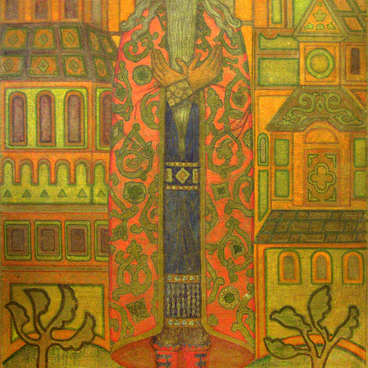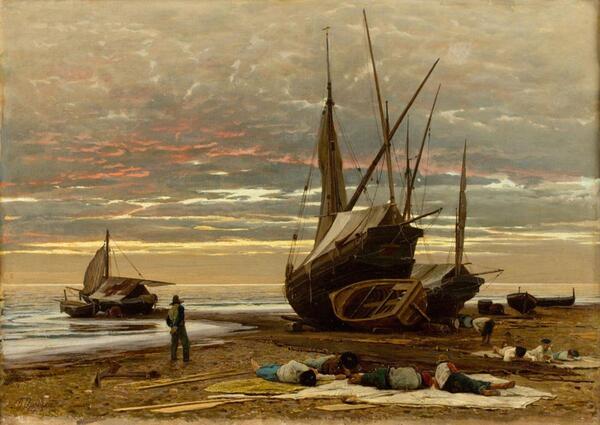The Russian landscape painter Vladimir Donatovich Orlovsky (1842–1914) was a student of Alexey Petrovich Bogolyubov, a marine painter, master of battle painting. He executed a large number of artworks for the imperial family of Alexander III.
Vladimir Donatovich came from a noble family and received his primary art education at the Second Gymnasium in Kiev. He began painting in oil even before entering the St. Petersburg Academy of Arts in 1861.
At the Academy, Vladimir Orlovsky quickly began to make progress. Already in 1863, he received a Grand Silver Medal, and in 1866 — a Small Gold one. From 1869 to 1872, he worked in Paris, Switzerland, Germany, and Italy as a “pensioner from the Academy.” His European works were highly appreciated by the Academy Council, which extended the master’s pension for three years, this time with the purpose of studying nature and subsequent improvement of the painting standards in the Russian Empire.
The heyday of the artist’s work occurred in the 1870s–1880s, when he visited the Caucasus and Crimea. The painting “Midday” from the collection of the Gorlovka Art Museum is very characteristic of this creative period. This work of Vladimir Donatovich Orlovsky represents a truthful poetic image. He masterfully conveyed the midday heat, the frozen surface of the water, and the thirsty cows.
Breaking harmony and silence, the artist placed a female figure in the background. Her diagonal movement increased the dynamics of the work. Vladimir Orlovsky turned out to be not only a talented painter, but also a good teacher, as evidenced by the successes of his students, among whom the landscape painter Sergey Ivanovich Vasilkovsky stood out.
The artist himself said,






